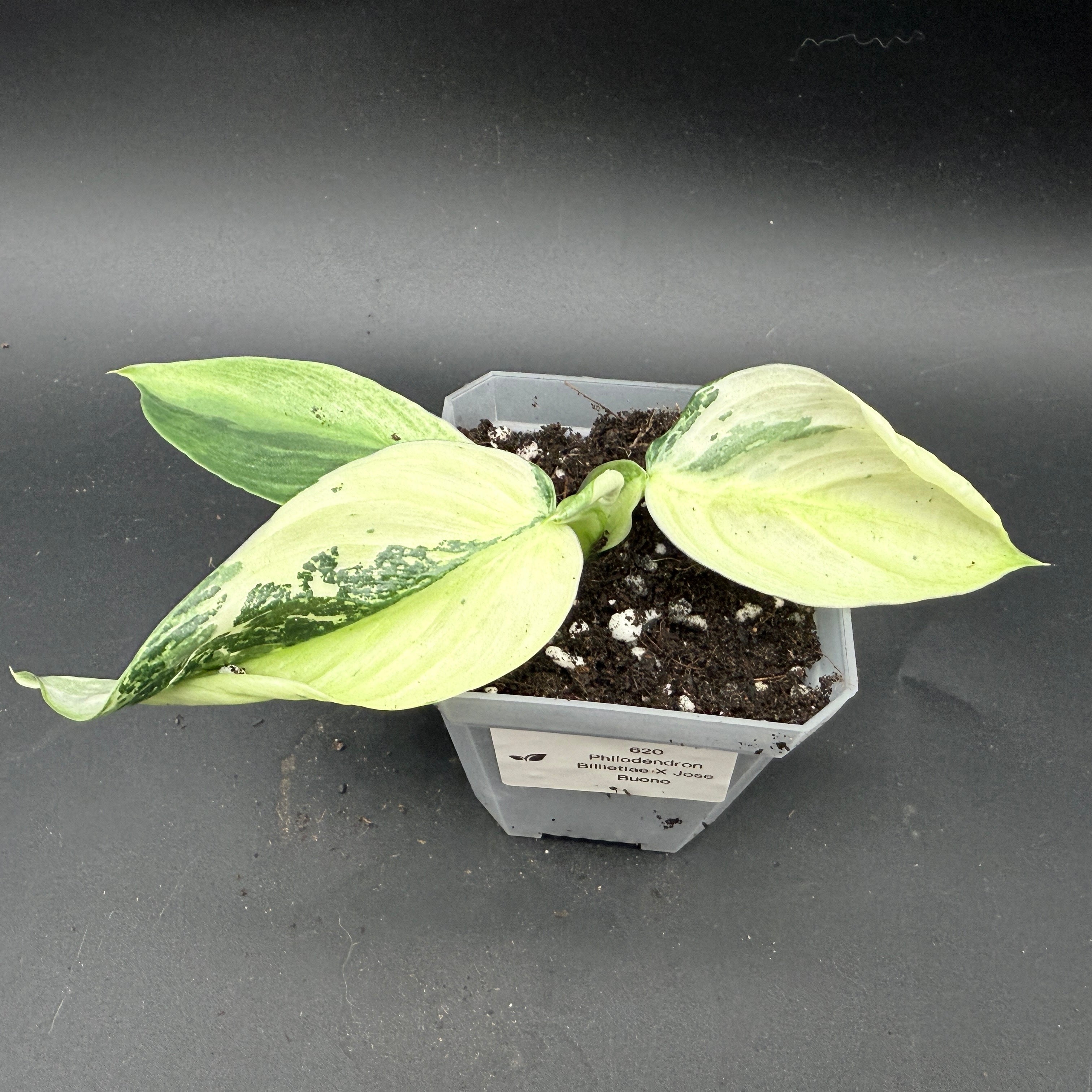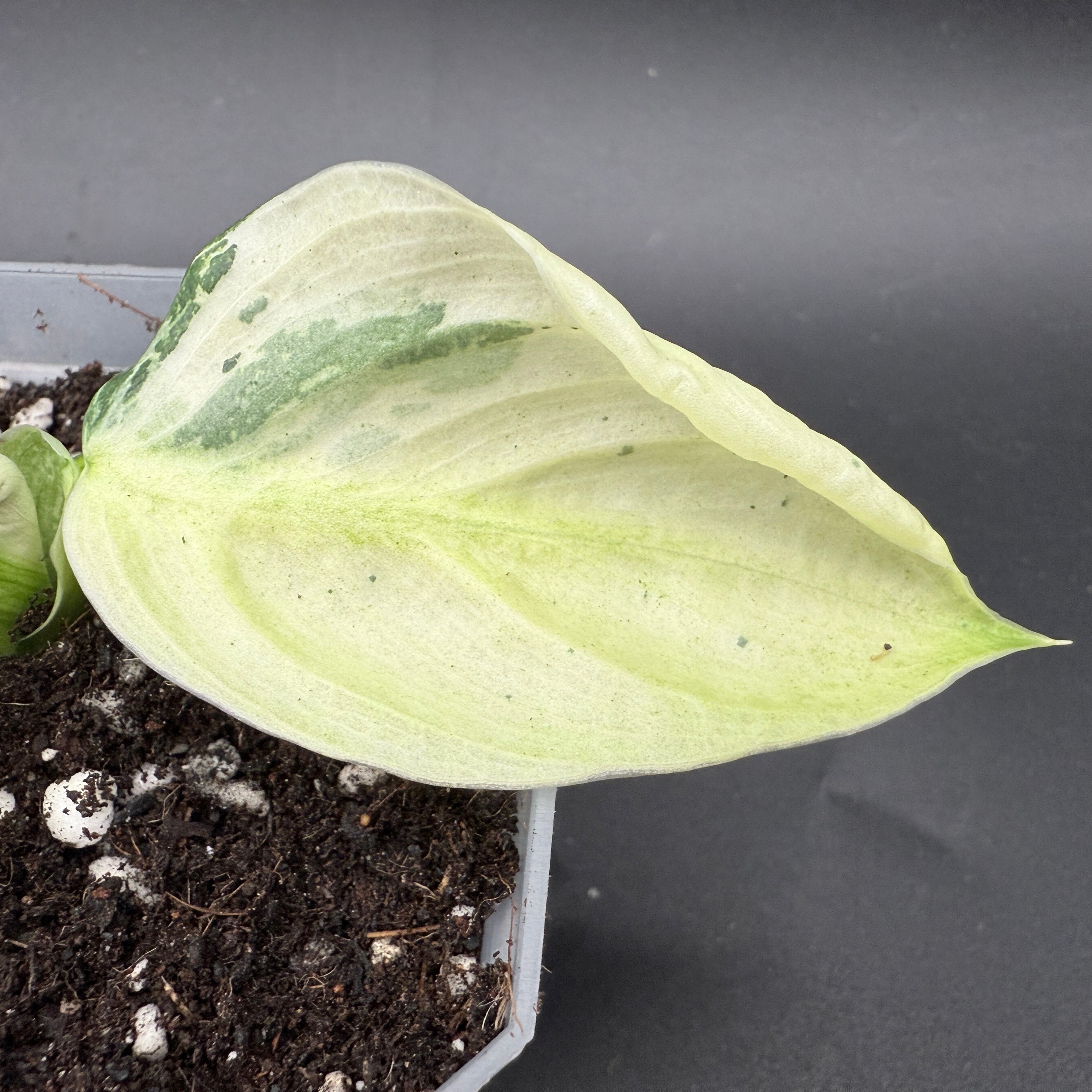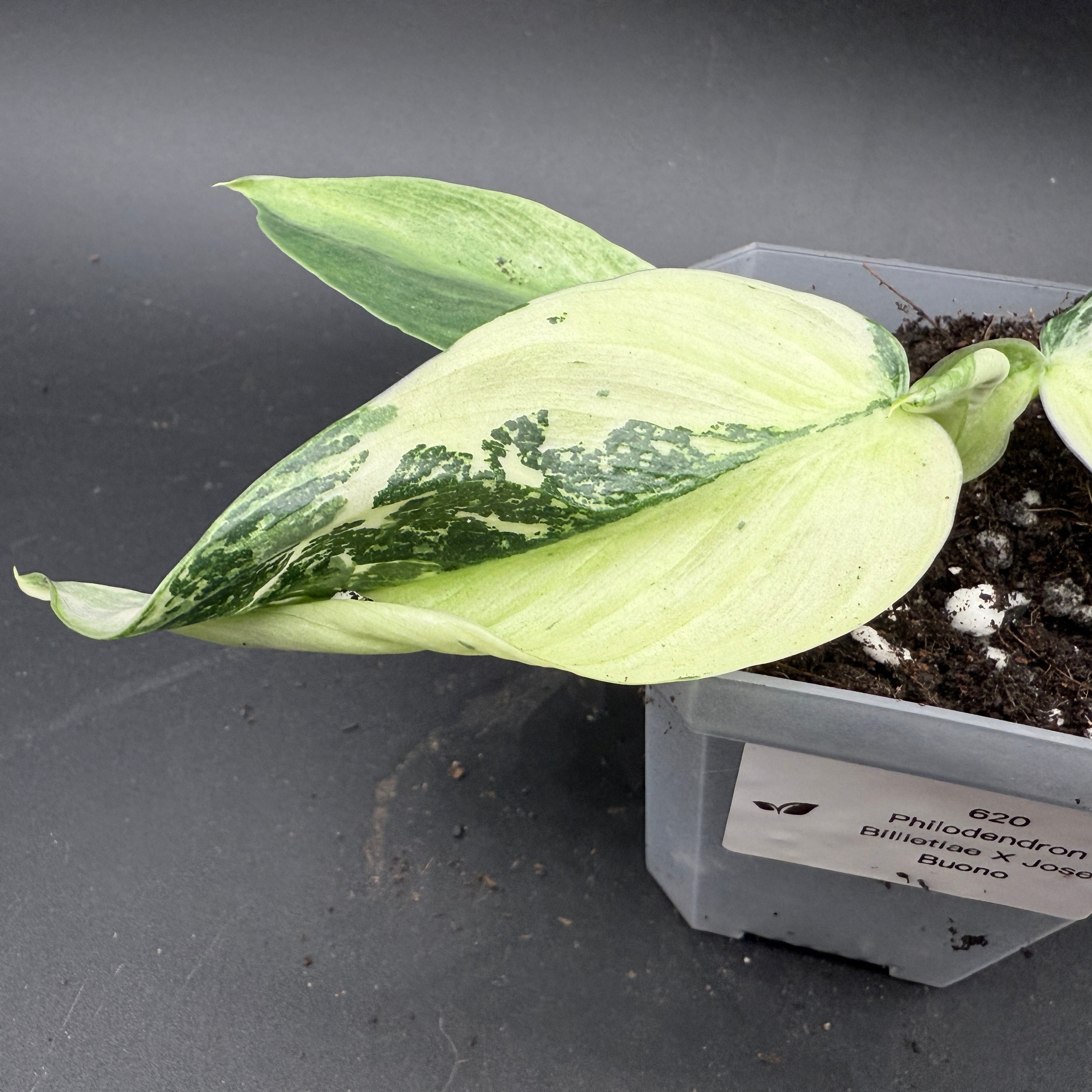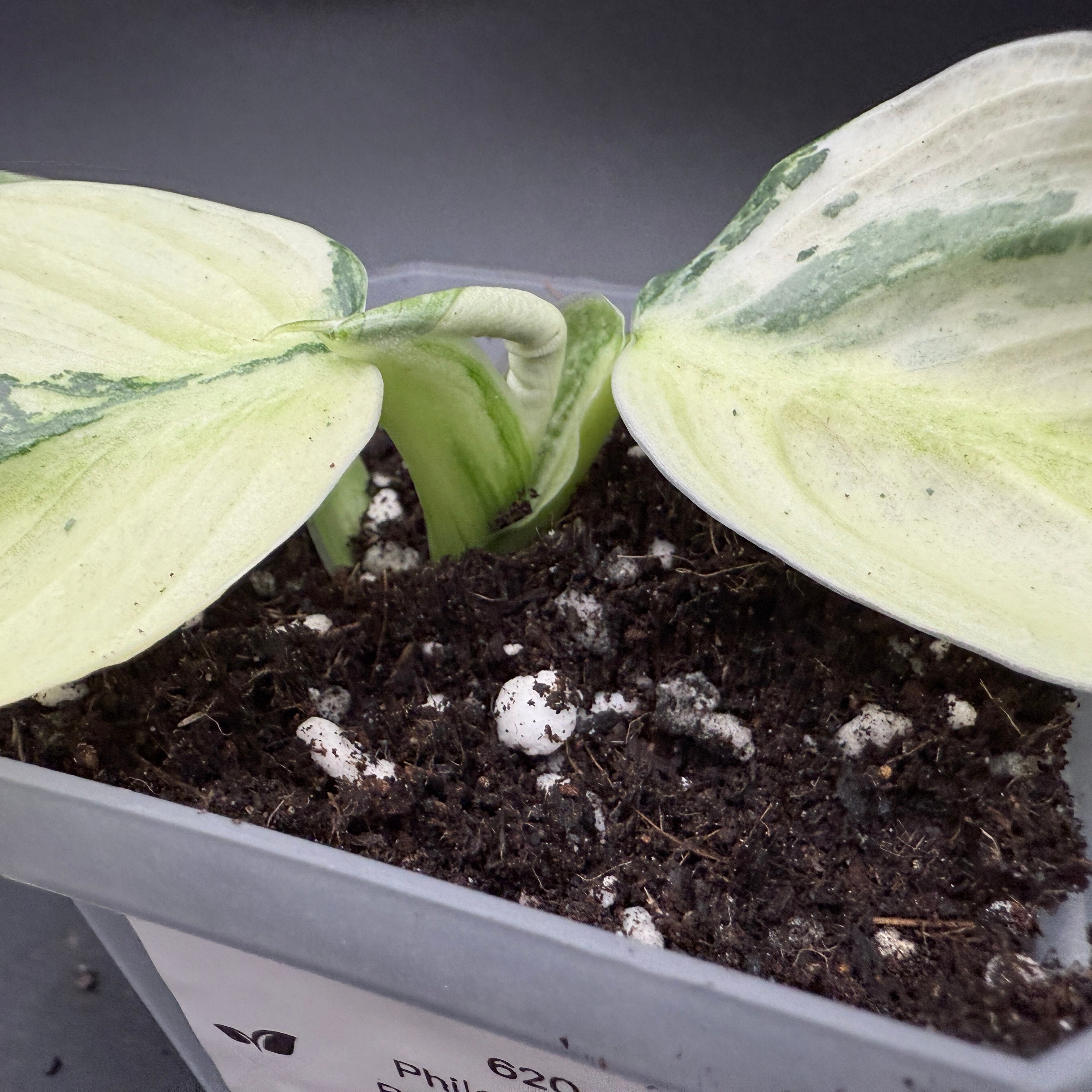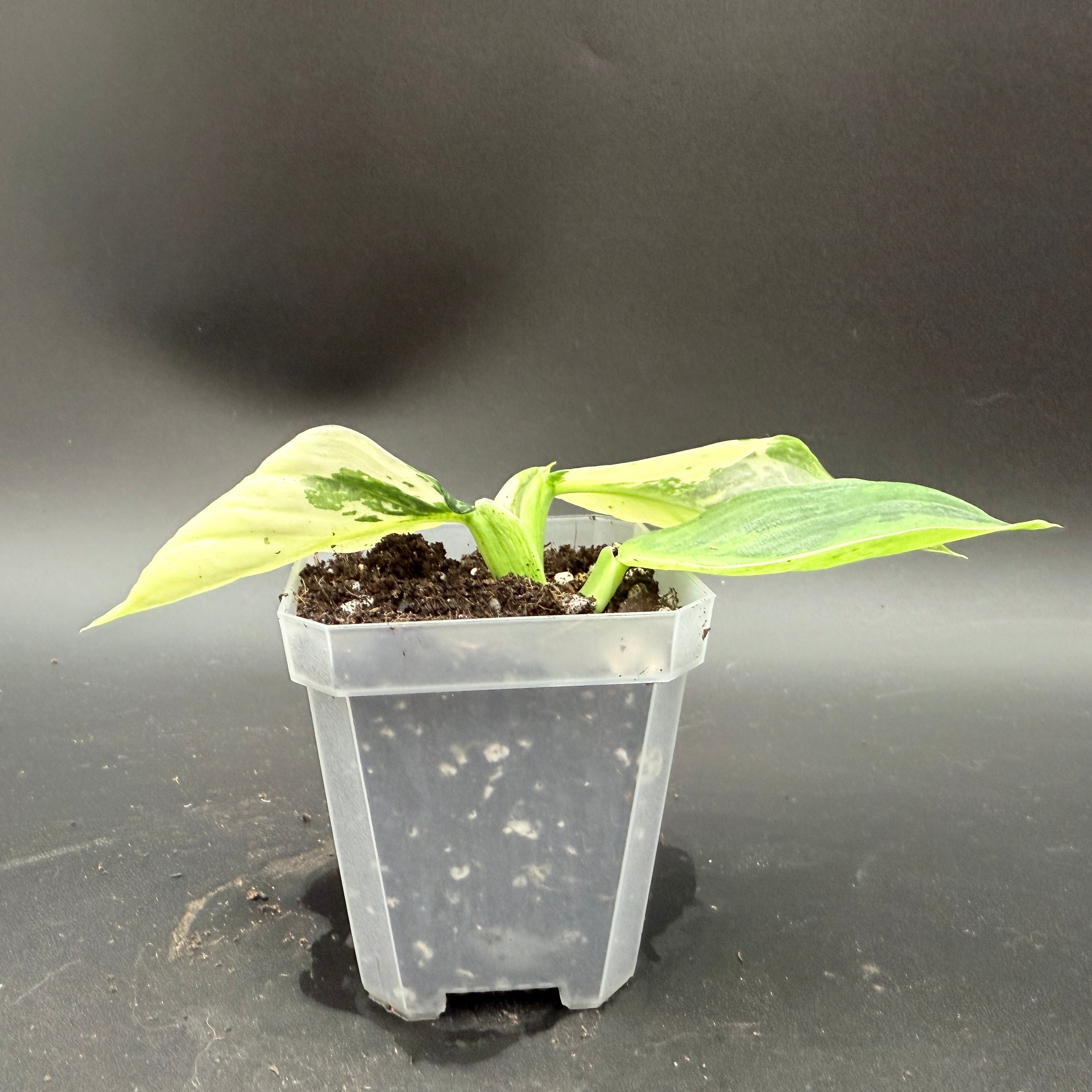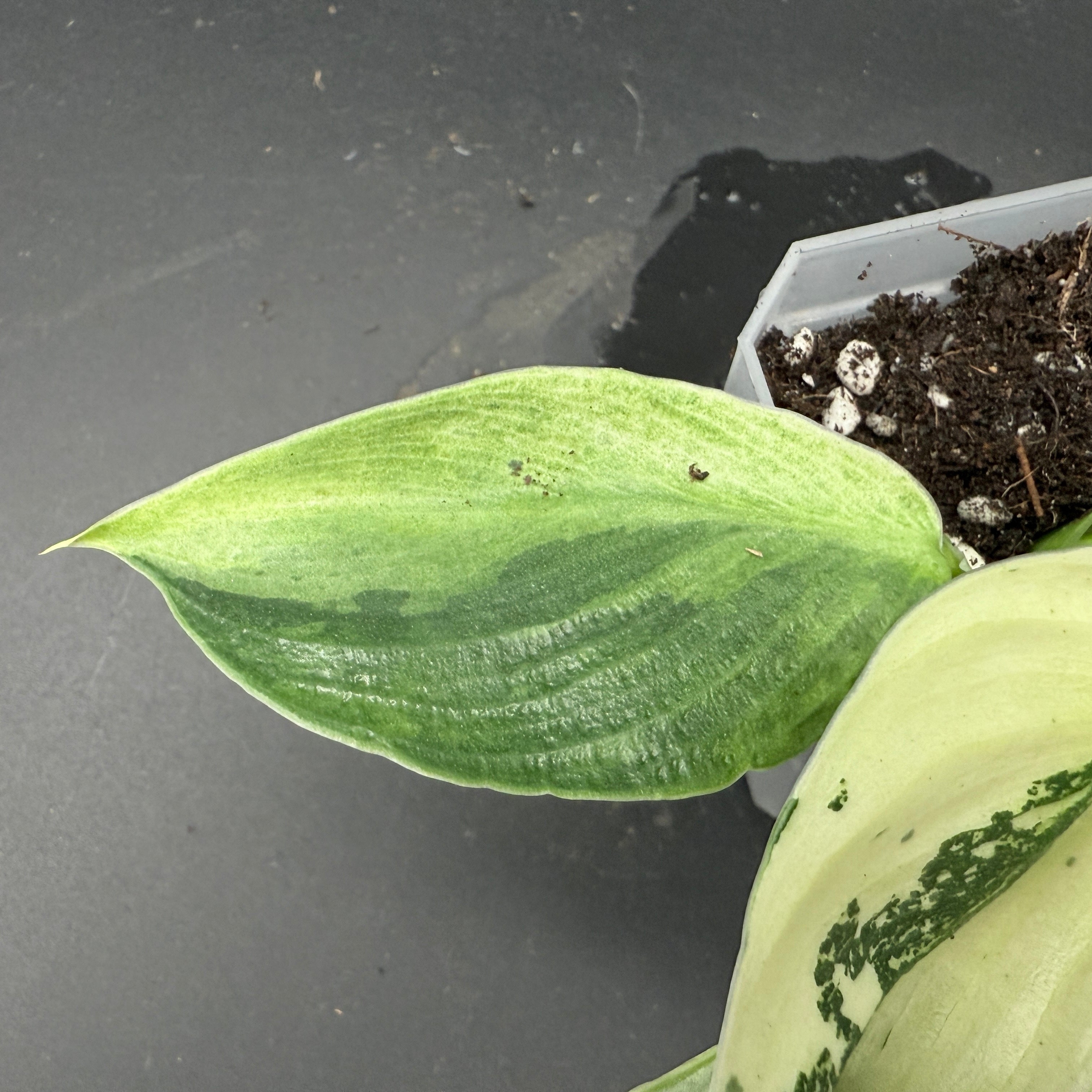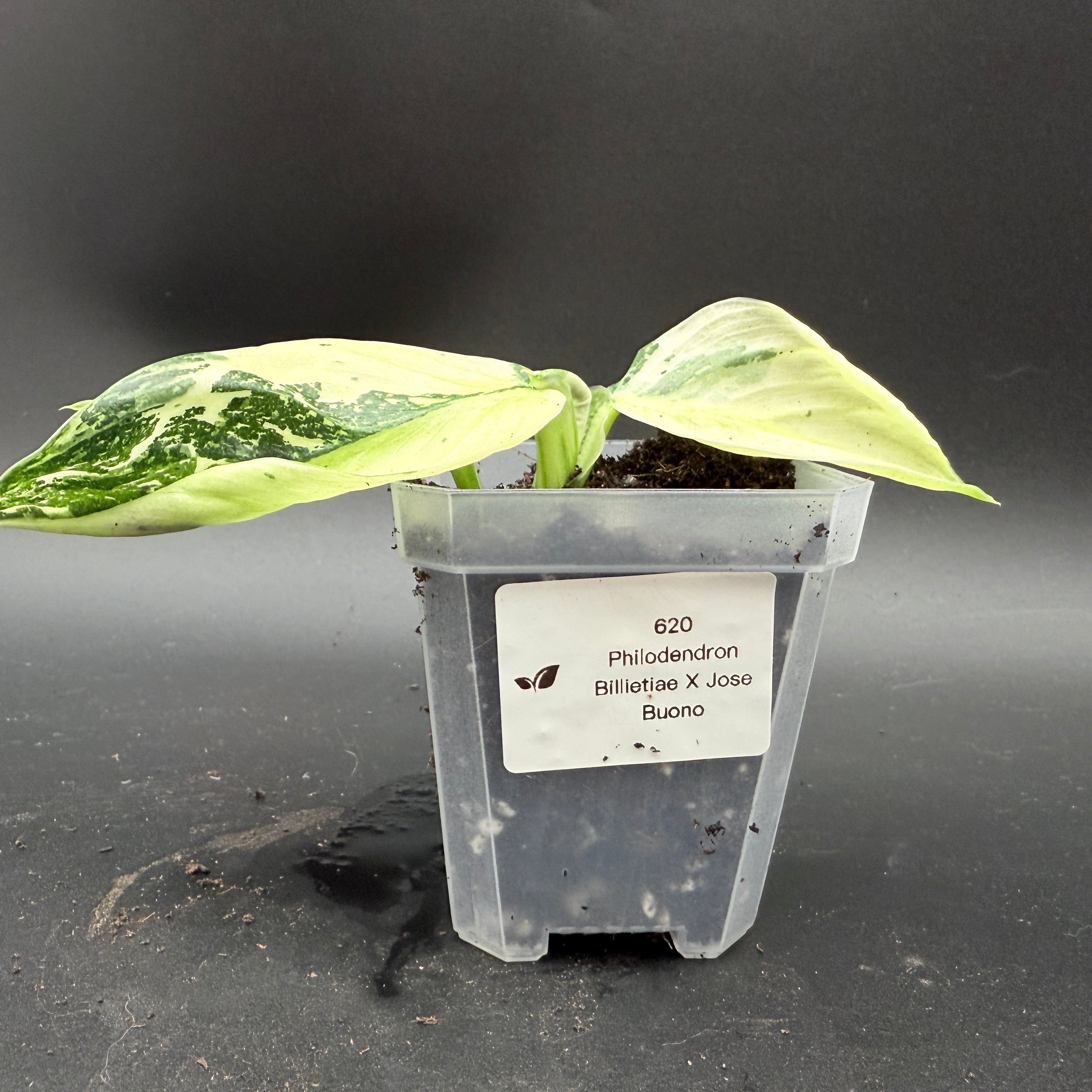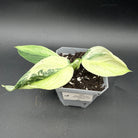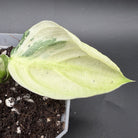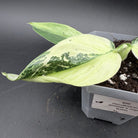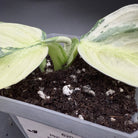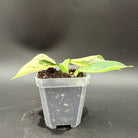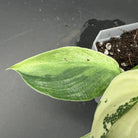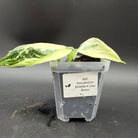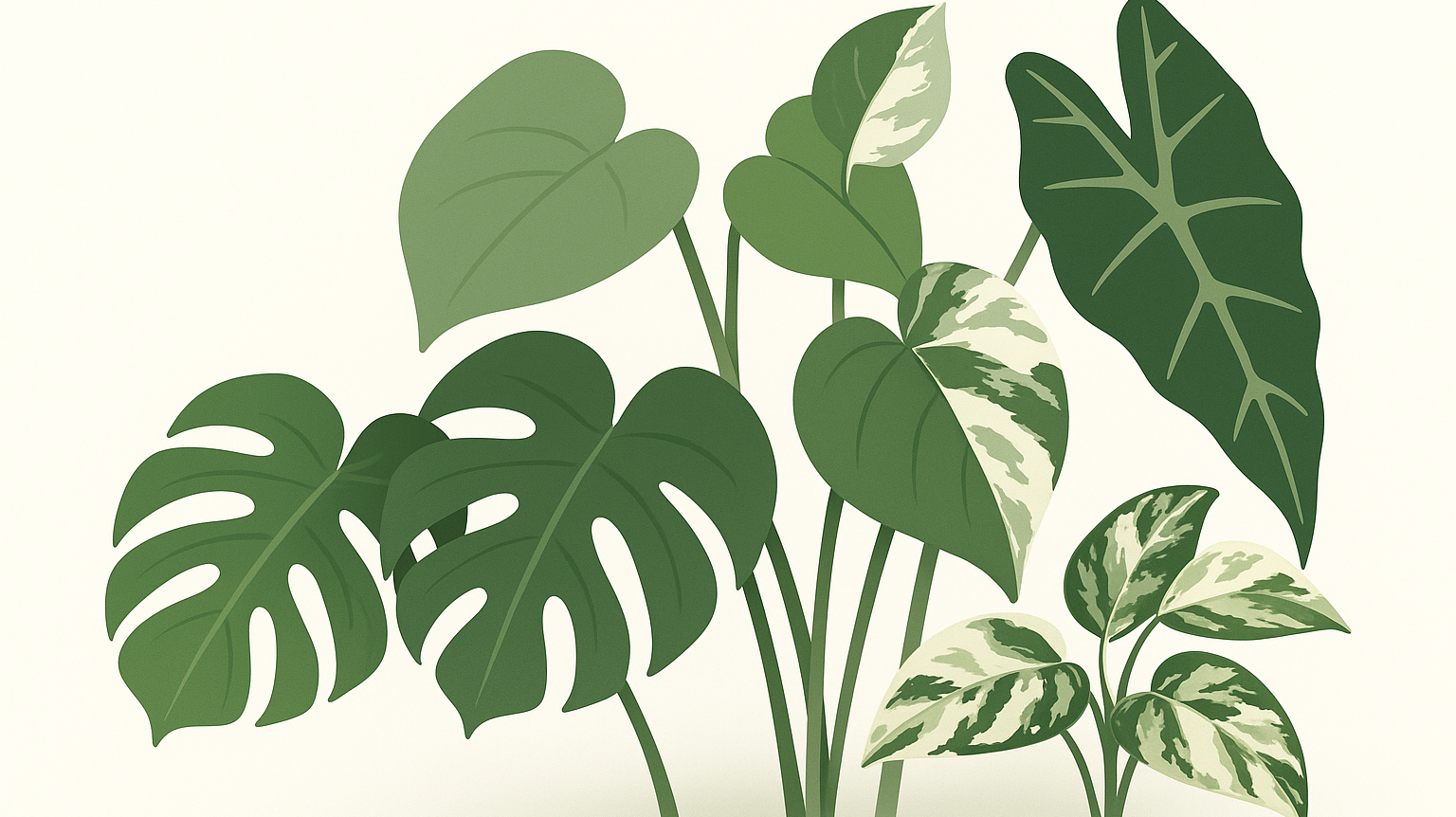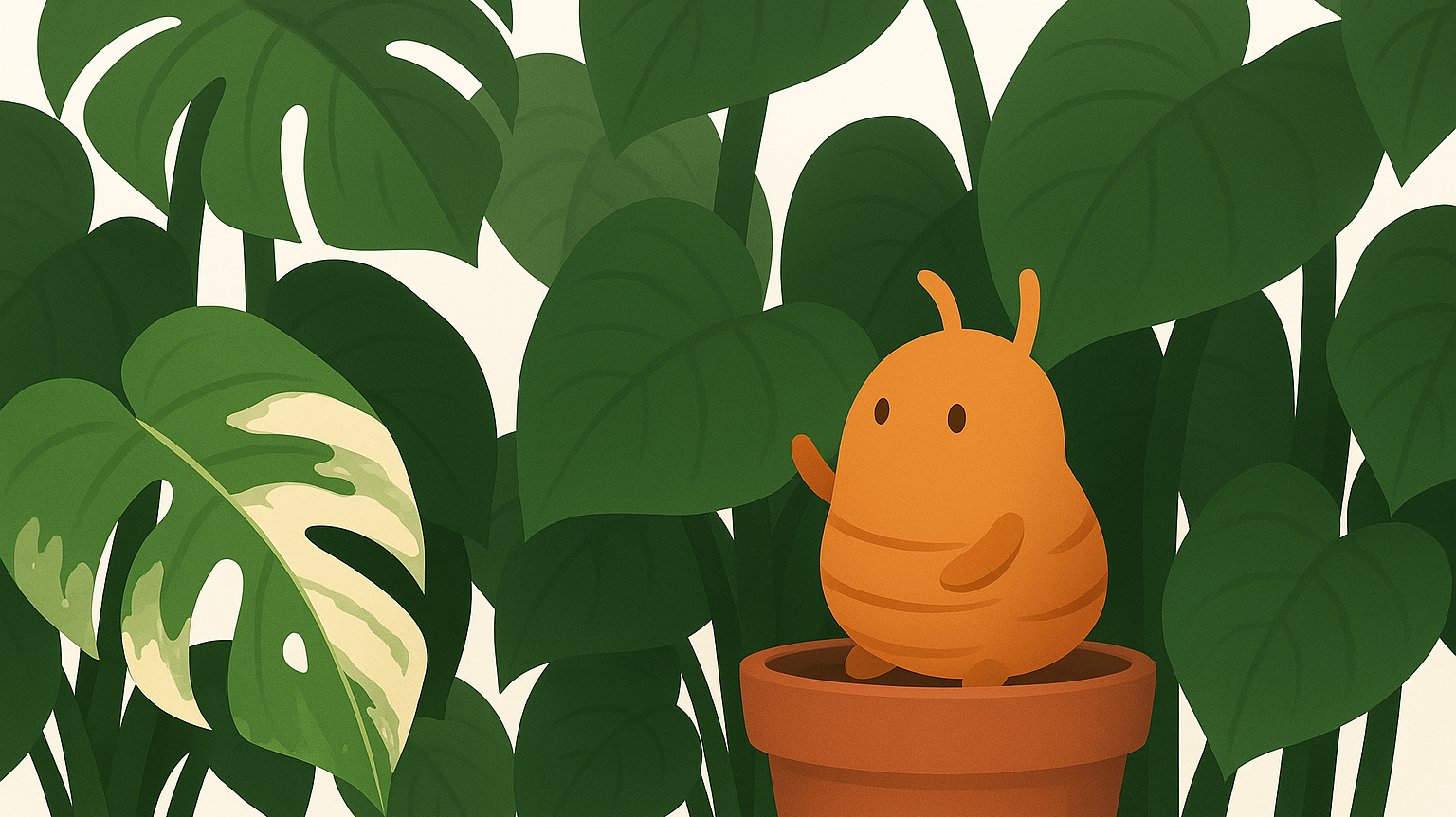Philodendron billietiae x Jose Buono Variegated (620)
The Philodendron billietiae x Jose Buono Variegated is a striking hybrid that commands attention with its bold, elongated foliage and unpredictable splashes of variegation. This plant combines the iconic, lance-shaped leaves and striking petiole ridges of billietiae with the creamy, marbled variegation signature to Jose Buono, resulting in a masterpiece that’s as rare as it is stunning. Each leaf is uniquely patterned, ensuring no two plants are exactly alike.
The combination of billietiae’s architectural elegance and Jose Buono’s painterly variegation creates a dramatic visual presence that works beautifully as a centerpiece or accent in any collection. Whether you’re an avid collector or curating your first rare plant, this hybrid offers unparalleled aesthetic appeal.
Care Details:
- Prefers bright, indirect light to maintain the vibrancy of its variegation and promote vigorous growth.
- Enjoys consistent moisture but thrives in well-draining soil to prevent root rot. Allow the top inch of soil to dry between waterings.
- High humidity (60% or more) enhances its lush growth, but it adapts well to standard indoor conditions with a little extra care.
Shipping Note: Each plant has been acclimated for at least six weeks, ensuring it arrives in excellent condition and ready to thrive. While minor transit imperfections on leaves are possible, they won’t affect the plant’s long-term health or performance.
Blog posts
What Is an Aroid?
Aroids evolved to solve the hardest problem in the rainforest—how to live with too little light and too much competition. The result? Some of the most beautiful plants on Earth.
How to Keep Variegated Leaves Through Winter
Winter light can turn your prized variegated leaves solid green. It isn’t bad care—it’s survival. Learn why plants shift their patterns when days get shorter, and how steady light and warmth can help keep the white in your Monstera or Philodendron from fading away.
Can Plants Hear Touch?
Plants don’t have ears, but they aren’t deaf to their surroundings. From sensing a fingertip brush to detecting the vibrations of chewing insects, plants register touch and sound through finely tuned cellular systems — and even change how they grow in response.

